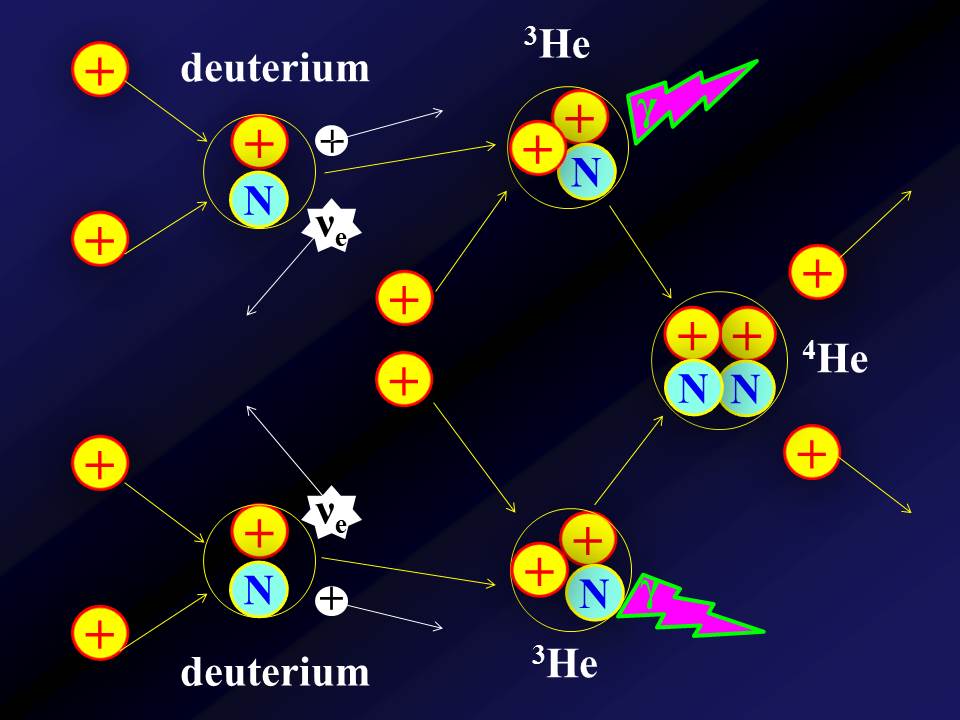
Stars are able to synthesize all elements except hydrogen (whose production requires the extreme physical
conditions of Big Bang). Before dealing with nuclear burnings, however,
it is useful to introduce the concept of “plasma”.
When atoms experience temperatures larger than 1 million degrees (a typical condition of stellar interiors),
electrons, which orbit around nuclei in terrestrial conditions, can freely travel along the structure without
being trapped by relative nuclei. The stellar gas, then, is formed by positive ions (nuclei) and negative
ions (electrons). As a consequence, it is "ionized" and it becomes a “plasma”.
Since the Sun is representative of the majority of stars shining in the sky, we can take it as a reference
to introduce the concept of thermonuclear burning. Sir Arthur Eddington in 1920 firstly postulated that the energy produced in the solar core derives from the
conversion of 4 hydrogen nuclei into 1 helium nucleus (at a pace of about 4 million tons per second).
During this process other two nuclear particles form: positrons (similar to electrons, but with a positive
charge) and neutrinos (those "fleeting" particles, weakly interacting with matter, are very numerous,
billions of them transiting through a nail-sized surface each second).
The process regulating the conversion of H into He occurs in three separate phases (see Figure 4).
During the first step, two hydrogen nuclei merge, producing a deuterium
nucleus (formed by 1 proton and 1 neutron). Therefore, during this process one of the protons turns into a
neutron: a "ß decay” occurred (a nuclear transformation governed by the weak force).
Deuterium, in turn, captures a proton, forming an 3He nucleus
(2 protons and 1 neutrons). Finally, two 3He nuclei interact, producing an
4He nucleus (consisting of 2 protons and 2 neutrons) and
releasing two protons. The mass of an helium nucleus, however, is lower than the sum of 4 hydrogen nuclei.
The mass difference is converted in energy, following the famous formula proposed by Einstein
E=mc2 (in a nutshell, it expresses the concept that mass and energy are nothing more than sides of the same coin).
The Sun produced such an energy in the last 4.6 billion years, with a power of 4 billion of billions of
billions of Watt.
